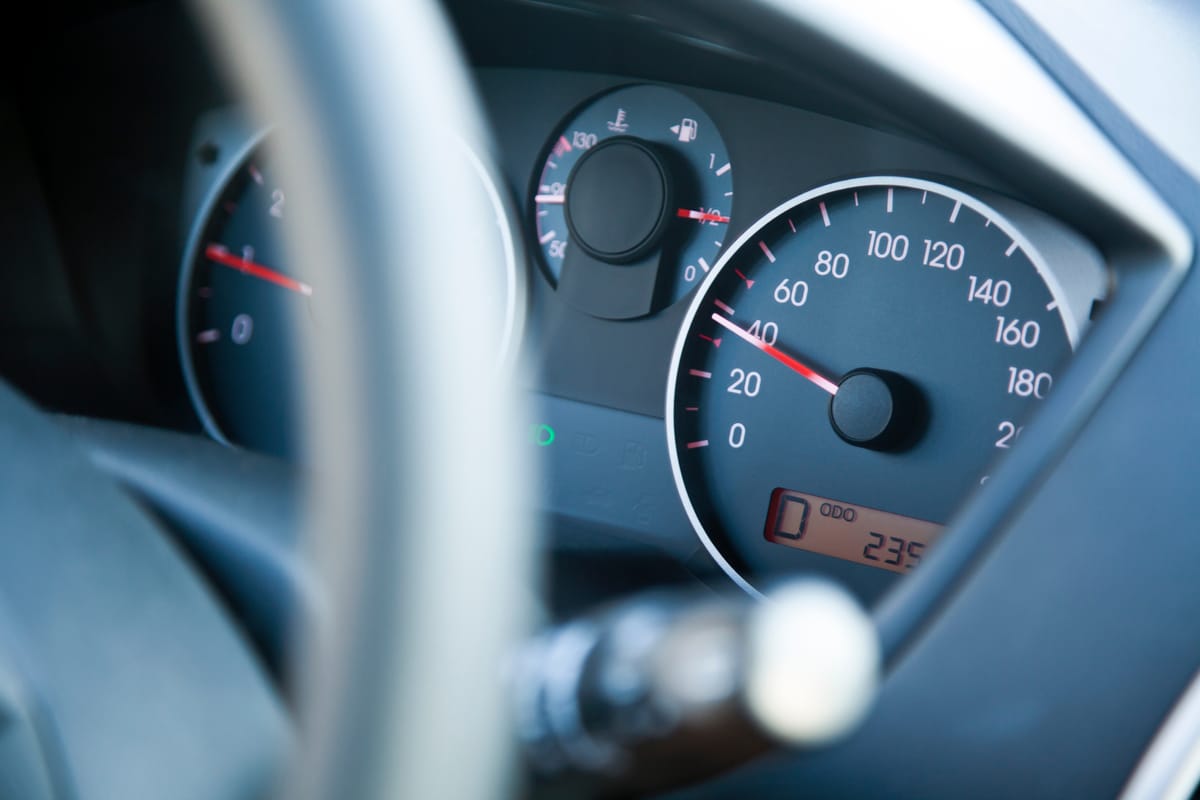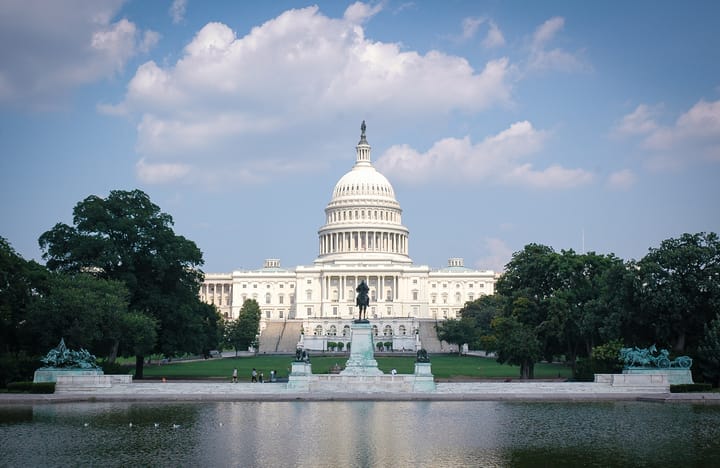Speed control = budget control
Plus: Autonomous trucks on the road | Distracted driver fixes

Rising fuel costs. Distracted drivers. A patchwork of emissions rules. Each challenge hits the bottom line harder than the last.
This week, we talk with Allen Schaeffer of the Engine Technology Forum about how fleets can cut fuel costs and emissions, starting with simple changes like speed control.
We also look at why distracted driving demands a personalized approach, the growing divide over autonomous and electric vehicles and a strange roadside accident involving a flying turkey.

Finding sustainability and cost control amid a patchwork of problems
With emissions regulations in a state of uncertainty, it can be confusing for fleets, small and large, to strike the right balance between compliance and furthering their own sustainability goals.
We spoke to Allen Schaeffer, executive director at the Engine Technology Forum, about strategies to navigate current regulations, along with five tips to cut emissions and keep costs in check. -Shefali Kapadia
What's one way engine tech has advanced in recent years that benefits trucking companies?
Without question, it's greater fuel efficiency. According to numerous sources, the average fuel economy for heavy-duty trucks today is anywhere from 12-16% higher than engines built a decade ago, with some fleets exceeding 50%! Those are cost savings directly to truckers.
How can small trucking firms make their fleets and operations more sustainable while keeping costs down?
There are several ways fleets can do this. They can focus on proper maintenance, which will reduce fuel consumption and lower emissions. They can use blends of renewable biodiesel fuels in existing trucks, reducing carbon emissions by at least 50% compared to regular diesel. Launch a program to stop unnecessary idling. A 2015 US Department of Energy study showed idling burns about 0.8 gallons per hour, and that can quickly drive up costs and create excessive engine wear. Don't tamper with emissions controls—particulate filters and SCR systems are there for a reason—to cut emissions. Disabling, removing or reprogramming engine computers violates the Clean Air Act. And in repairs, consider using remanufactured engines and components. These are warranted like new and reduce demand for raw materials and energy while lowering waste.
What's your top piece of advice for small business trucking owners looking to improve their fleet's fuel efficiency?
Speed control! Driving at higher speeds burns more fuel. Reducing speeds traveled reduces fuel consumption, pure and simple. Every 1 mph over 55 mph costs 0.1–0.2 mpg in fuel economy. Take a driver cruising at 60 mph and incurring a fuel economy penalty of 0.5-1.0 mpg. For 10 trucks, each traveling 100,000 miles every year, the extra fuel cost could be over $127,000, and more fuel consumed equals higher emissions.
What do you wish the current administration would focus on to benefit trucking companies and improve sustainability?
A rational and national approach to future emissions and fuel policy; one that eliminates the uncertainty for manufacturers and fleets about what kind of truck they can buy in which states, and levels the technology playing field for all fuels without playing favorites, while still encouraging investment in cleaner and more efficient technology and fuels. Some want to try zero-emission trucks, others want to stick with diesel and use renewable biofuels instead, others want to use natural gas. Current rules are setting up a patchwork of problems for buying and operating trucks in the next five years.

A personalized approach to stop distracted driving
We're closing out Distracted Driving Awareness Month, and it's a reminder to fleet managers that distracted driving—whether it's your own drivers or others on the road—is a critical issue year-round.
Gina Anderson, CEO of Luma Brighter Learning, which provides learning tools for the transportation industry, writes that it's important to address individuals' needs when it comes to distracted driving. In-vehicle tech like lane assist might be helpful to some drivers but bothersome and more distracting to others.
Tailored and personalized techniques to prevent distractions can provide safer roads for everyone, Anderson notes.
"When every driver feels seen, supported, and equipped, we don’t just prevent crashes, we create a culture of responsibility and care on the road."
Why this matters: A uniform set of tools may be easiest for fleet managers to roll out and manage. But recognizing the behaviors and preferences of individual drivers could further enhance safety and make drivers feel more supported in the cab.
Get more details at Inc.

NO GO: FMCSA denies request for commercial learner’s permit at age 17
LANGUAGE CHECK: Okla. bill to require English proficiency for drivers
BIKE HEIST: Truck carrying hundreds of bikes stolen in fraud scheme
FLYING TURKEY: Trucker injured after turkey crashes through windshield

"The system is stacked against the commercial truck. That is just the way that it is. And no one said [it's] fair."
-Jacqueline Caceres, Brownstone Insurance Managers
Insurance premiums for carriers have been on the rise, and those spikes aren't showing signs of slowing down. Caceres and other insurance professionals spoke at a Fleet Safety Council meeting about risk, claims and how they work with fleets. Listen to their recap on the Lead Pedal Podcast here.

Tariffs spell trouble for trucking's near-term future
Trucking leaders will likely be waiting longer for the end of the freight recession. After a few months of shippers pulling forward inventory and boosting truck volumes, tariffs are now starting to dent imports, with a 3-4% volume decline expected over the next month.
Why this matters: The road ahead appears bumpy for trucking carriers, with lower volumes and rates. It's all the more critical to manage costs and maintain relationships with key customers to weather this storm. (NBC News)
Aurora launches fully driverless trucks on 200-mile route
Autonomous tech company Aurora Innovation is sending out trucks on I-45 sans backup safety drivers. The route covers 200 miles of roadway between Dallas and Houston. Aurora says it's starting with one truck and will gradually expand the fleet over time. Critics fear a lack of safety and regulations to govern unmanned vehicles.
Why this matters: Technology is making driverless trucks possible, and proponents say AVs will help ease driver availability issues and supply chain constraints. (Tech.co)
Calif. firms plow ahead with EVs, charging despite reg changes
The Trump administration's repeal of several Biden-era emissions regulations hasn't stopped some companies from pressing ahead on electric trucks and charging. Greenlane, an EV charging company, says there have been some slowdowns, but it recently unveiled a new charging facility in California. Meanwhile, EV trucking company Nevoya plans to expand operations beyond California to Texas and Arizona.
Why this matters: While many regulations mandating EV transitions are on hold or pulled back, parts of the market still favor electrification as the future of clean freight. Companies may continue to scale EV operations as long as they see a business case for it. (Newsweek)

Fleet software firm Motive unveils new AI-driven tools
Motive, which provides fleet management and driver safety tech to carriers, debuted a slew of new AI-based features—real-time alerts, fraud prevention, safety models focused on driver fatigue and an "AI Coach," which generates personalized videos to help drivers improve their safety.
Why this matters: AI is no longer a buzzword in trucking. Real-time alerts for lane swerving and feedback personalized for individual drivers can make the roads safer for everyone on them. (Transport Topics)

Thanks for reading today's edition! You can reach the newsletter team at editor@theinsidelane.co. We enjoy hearing from you.
Interested in advertising? Email us at newslettersales@mvfglobal.com
The Inside Lane is curated and written by Shefali Kapadia and edited by Bianca Prieto.





Comments ()